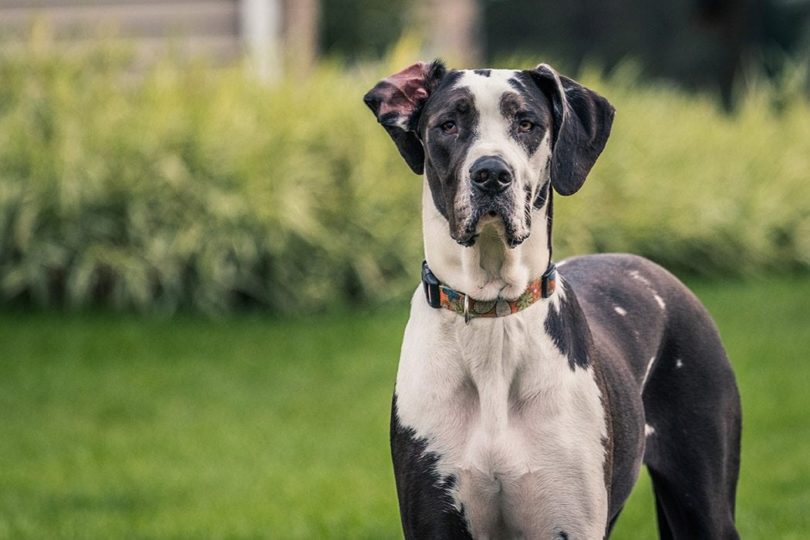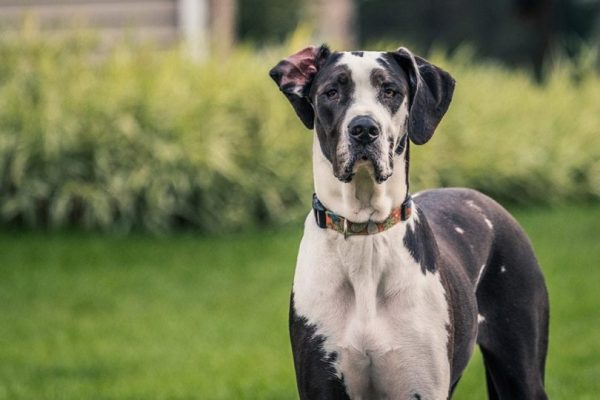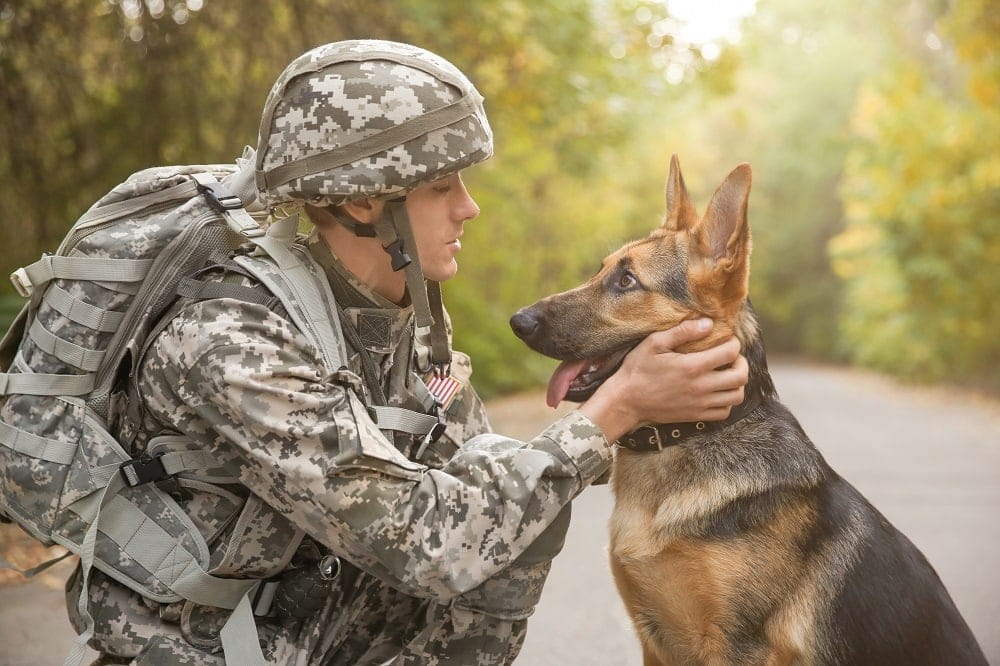Click to Skip Ahead
Breeding dogs isn’t as simple as putting a male and female together and letting nature run its course. Although it is possible to breed them this way, it isn’t something we can condone. The proper way to breed Great Danes and other breeds is to screen your dogs for inherited genetic conditions to ensure that you aren’t passing along poor genes to their offspring. On top of health guarantees, you must provide quality dog food and be attentive to some of the issues that Great Danes face. Although the process itself is straightforward, there is a lot of information that people don’t know about breeding Great Danes.

Great Dane Background
Great Danes are gentle giants, and their enormous size is what draws so many people to them. These dogs originated from Germany and were created by cross-breeding the Irish Wolfhound with the English Mastiff. Some researchers believe that some Greyhound ancestry was involved in the breeding process as well.
You wouldn’t think their large size would make them stealthy hunters, but Great Danes were bred to hunt large game like boar and bear. They would use many different dogs for these hunts. The Great Dane’s job was to hold the game for the hunters and prevent them from escaping. Over time, their aggressive nature has been bred out of them since there was no longer a need for it.
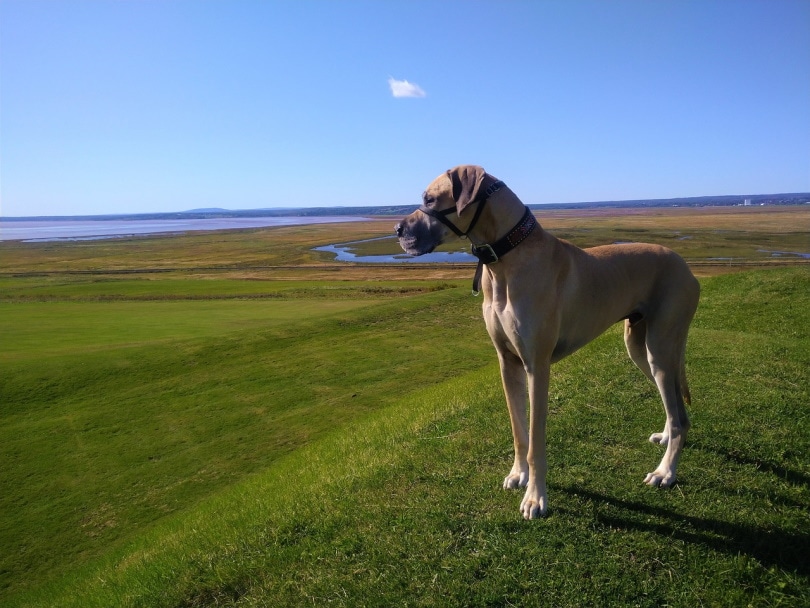
Their Royal History
Great Danes weren’t the only boar hunters in the past. They were also favored by the royal courts and served as guard dogs for the royal family. Great Danes would sleep in the bedroom chambers with the princes or princesses to protect them from assassinations. Many other historical figures also enjoyed having these dogs by their side, including President Franklin D. Roosevelt.
Great Dane Popularity
The American Kennel Club started recognizing Great Danes in 1887. It has remained in the top 20 most popular dog breeds in America. Today, it is represented in popular movies and television shows as well.
The 5 Health Concerns in Great Danes
Great Danes are big dogs, and the downside to this is that they don’t live long. The average lifespan is between six and ten years. They have several health problems that contribute to this timeline. They are athletic animals and require a lot of vigorous exercise to keep them in shape.
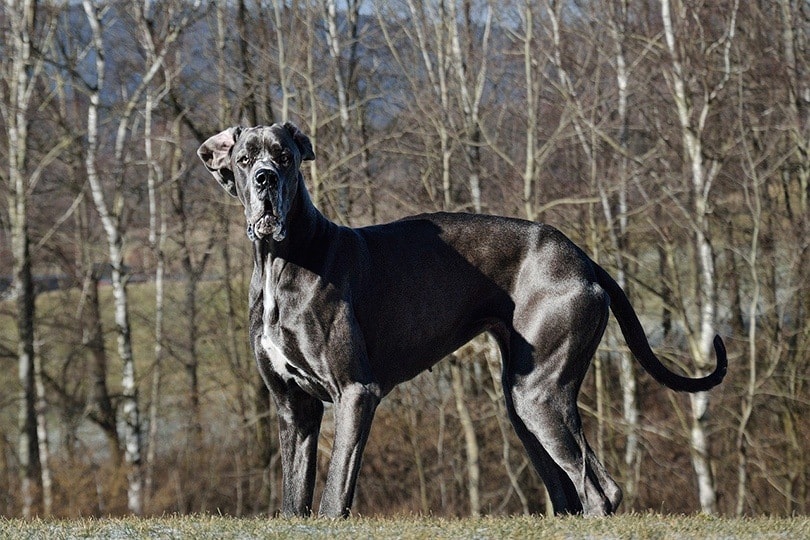
1. Cancer
One of the top causes of death in Great Danes is cancers like lymphoma and bone cancer.
2. Slow Metabolism
Their slow metabolism allows them to continue to grow after their first year, but their slow metabolism gives them other problems. Dysplasia is prevalent in this dog breed and can be painful for them. These dogs also suffer from slipped discs.
3. Thyroid Issues
Great Danes have a predisposition to thyroiditis, which is caused by a lack of thyroid hormones. Signs of hypothyroidism include weight gain, dull coat, and sluggishness.

4. Bloat
Although serious, this isn’t as big of a concern as bloat. Great Danes have wide chests and square bodies that increase their stomachs’ chances of twisting and cutting off the blood flow to their intestines. Bloat is a serious condition. Without treatment, the dog will go into shock and die.
5. Heart Conditions
Great Danes are in the top six dog breeds with advanced cardiac issues. Dilated cardiomyopathy is a common problem in this breed and attributed to many different issues with heart failure. It usually occurs with middle-aged dogs and progresses rapidly. This is why most clubs recommend that you get your Great Dane checked for heart conditions every other year.

How to Breed Great Danes
Don’t assume that breeding your Great Dane is going to be a cheap and easy process. This process requires a lot of health screening that clears them for genetic testing. This testing alone could cause some pretty high vet bills. Because the dogs are so large, many Great Danes also must deliver through C-section instead of natural birth.
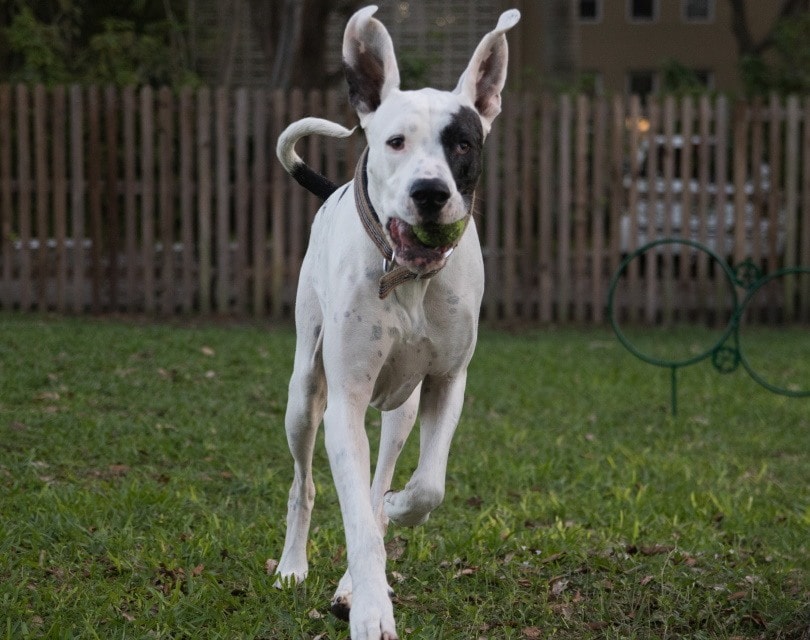
What Age to Breed Great Danes
Only breed two Great Danes after their first 6 to 12 months of life or when their heat cycles have begun. The ideal time to breed them is between the ages of 2 and 7 years. From there, the breeding process is fairly straightforward.
How Long Are Great Danes Pregnant?
A female Great Dane has a normal gestation period of about 63 days. However, this time could vary by a few days.
How Many Puppies Do Great Danes Have in Their First Litter?
Great Danes have an average litter size of eight puppies, with some having as many as 10. Litters with eight puppies usually require surgical delivery as opposed to smaller litters. Cesarean is preferred because Great Danes are more prone to birthing difficulties and dystocia.
Acceptable Great Dane Colors
According to the American Kennel Club, there are 9 acceptable colors for Great Danes:
Keep in mind that there are also genetic issues associated with specific colors. The merle color is often associated with deafness and eye problems. If breeding two merles together, the puppies only have a 25% chance of inheriting two merle genes. Their chances of deafness and blindness also increase, which is why it is considered unethical to breed two merle Great Danes with each other.
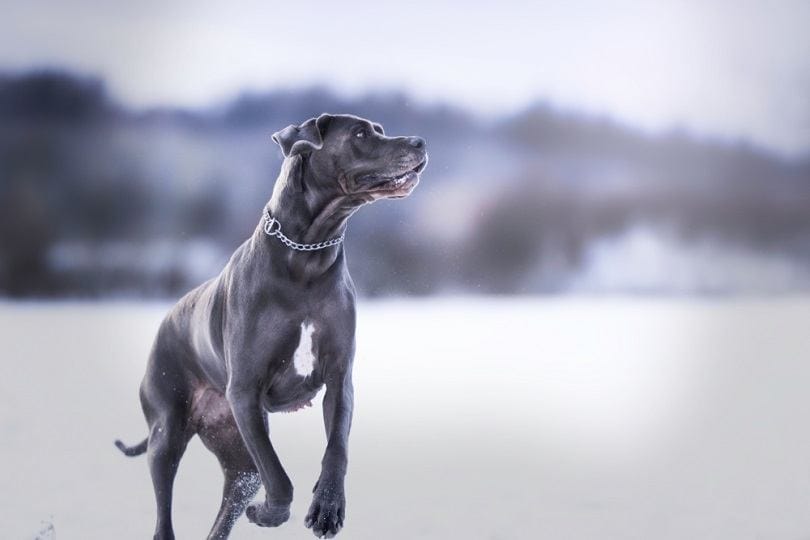

Tail Docking and Ear Cropping
It’s common practice to see Great Danes with their ears cropped. This practice began when they were used for hunting boar because their floppy ears could be snagged and ripped off. Both ear cropping and tail docking serve no functional purpose today and are only done for cosmetic reasons. We recommend avoiding these practices at all costs. Not only does the procedure cost a lot, but it is also a painful process and could give you more problems during the healing process. These are even illegal in some countries today. Do both yourself and the dogs a favor by refraining from these unnecessary practices.
How Much Does a Great Dane Puppy Cost?
Great Dane puppies cost between a few hundred dollars to several thousand dollars. This price changes depending on the pedigree, breeding quality, and location. This breed is an expensive one to own as well. Mature dogs weigh over 100 pounds and have a huge appetite to go along with it. Their long list of health issues also makes them some of the top dogs with high veterinary bills. Their large size must also be accommodated for, meaning that you likely spend more money for more house to allow them to have the space necessary for a comfortable life.
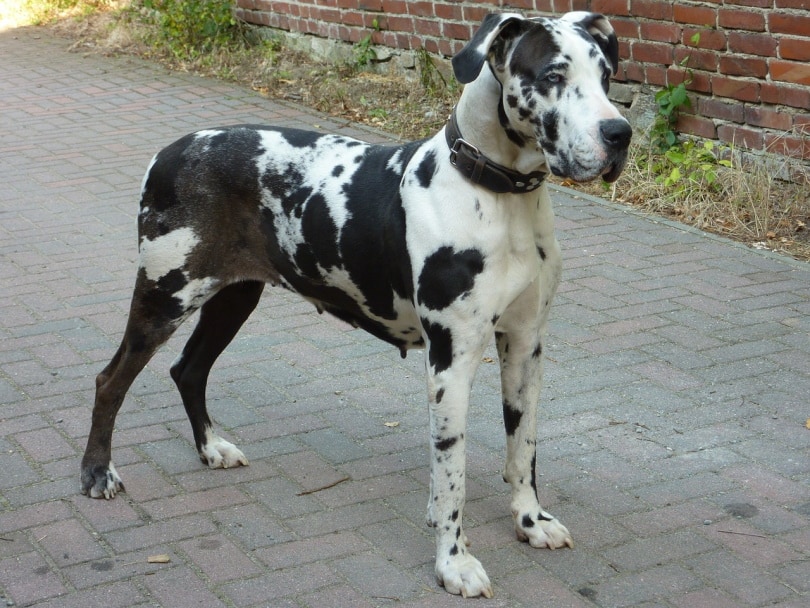
Final Thoughts
Although the process of breeding Great Danes is straightforward, there is still a lot that you have to know in order to do it ethically and safely. The last thing you should want is to pass along unfavorable genes for generations. If you’re serious about it, make sure you take all the proper steps to achieve it in a safe and humane way.
Next on your reading list:
- Male vs. Female Great Danes: What Are the Differences?
- When Should I Spay or Neuter My Great Dane? How Will I Know the Time is Right?
Featured Image Credit: Earl Wilkerson, Shutterstock

